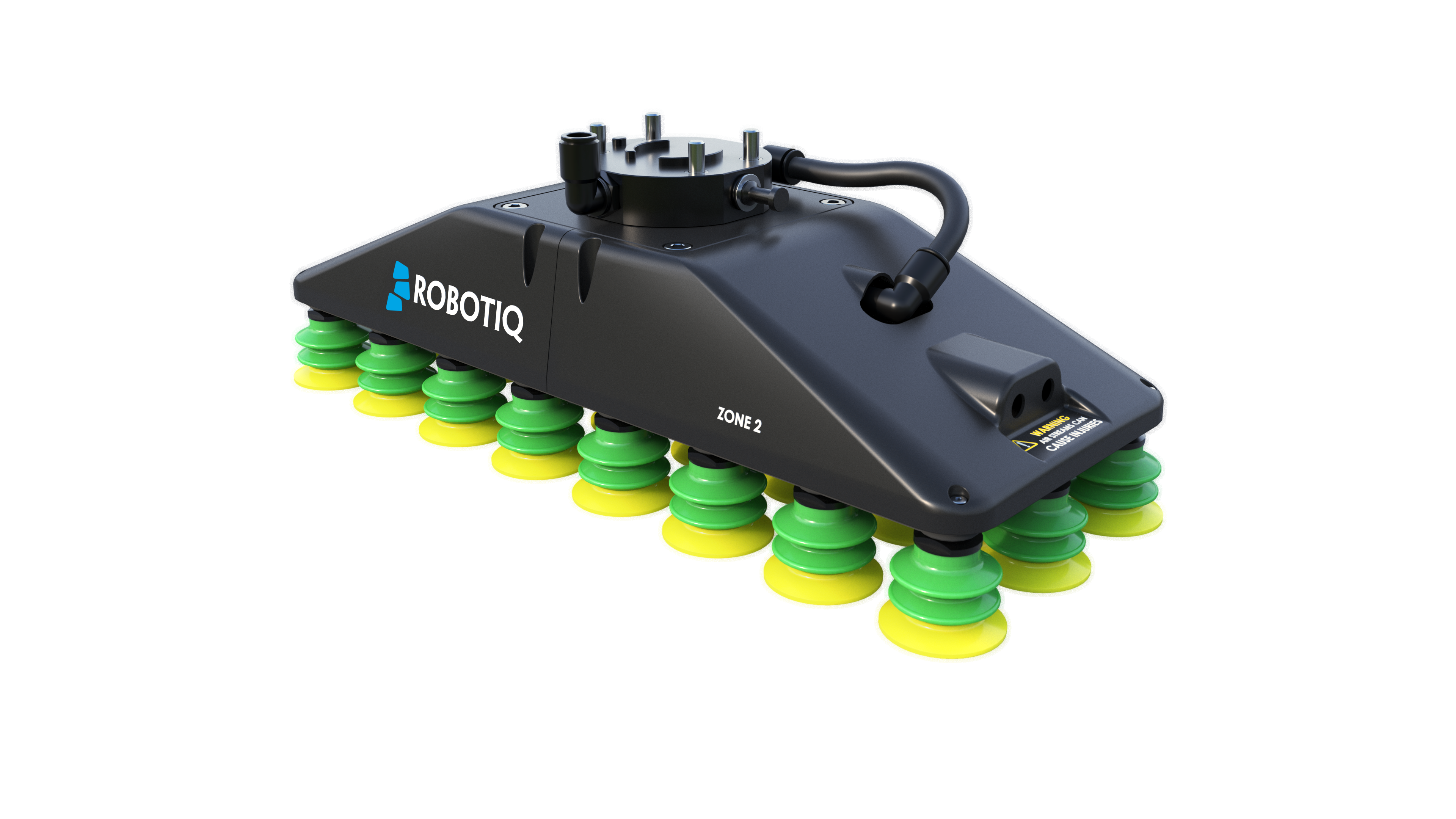Barrett Hand vs Robotiq Adaptive Gripper

Posted on Jan 24, 2012 in Robot Grippers
3 min read time
Our Adaptive Gripper has many advantages over the simple two-finger claws often found in industry, as it can automatically adapt its shape to the object it seizes. This allows a robot to pick up many objects with a single tool, thus removing the need for custom grippers and tool changers. However, it is not the only player in the game. The Barrett Hand, manufactured by Barrett Technology Inc., is another commercial, three fingered gripper which can adapt to objects of different shapes while preserving simplicity by using a small number of motors (4 for both grippers). Lets compare them.

Barrett Hand - Picture via jiuguangw on Flickr
Robotic Hands Functionalities
For the two grippers, the motion is controlled by one motor per finger plus another motor which is responsible for rotating two fingers. For the Barrett Hand, the fingers can pivot 180 degrees, being either opposed or aligned to the fixed finger. For the Adaptive Gripper, the fingers rotate in the plane facing the fixed finger to accommodate smaller or wider loads. The Adaptive Gripper fingers also contain a linkage mechanism which improves the fingertip grasp by keeping the contact surfaces parallel for the whole closing motion.
Both grippers can be controlled through high-level commands such as “open” and “close” while speed and force parameters can be programmed. However, the Barrett Hand can also be controlled through a real-time mode, allowing a low-level control for advanced users. Also, the Barrett Hand is available with force sensing packages, providing feedback either from the fingertips or the joints. There are no tactile sensors per say on the Adaptive Gripper. In fact, there are no electronics in the fingers at all. Information from the motors (current, encoder) is used to control the force applied and detect if an object was gripped.
Hands Performances
When it comes to performances, nothing beats a table filled with specification metrics:
|
Barrett Hand |
Adaptive Gripper |
|
|
Weight |
1.2 kg (2.6 lbs) |
2.3 kg (5 lbs) |
|
Payload (encompassing grip) |
6.0 kg (13.2 lbs) |
10 kg (22 lbs) |
|
Payload (fingertip grip) |
Not specified |
3 kg (6.6 lbs) |
|
Maximum fingertip force |
15 N (3.4 lbf) |
40 N (10 lbf) |
As it can be seen above, the two grippers are not designed on the same scale. It is fair to say that the choice of a gripper is largely influenced by the weight of the objects to be manipulated and by the maximum payload of the robot arm.
Hands Reliability and Robustness
The Adaptive Gripper was designed with robustness in mind and some serious testing was performed to evaluate the life-span of the gripper under various conditions. A test gripper running 24/7 has crossed the milestone of 3.5 millions cycles without failure.
It is difficult to obtain similar data for the Barrett Hand. However, it is interesting to note that the warranty offered with the gripper is limited to no more than 5000 cycles per month. This number of cycles is quite small compared to the requirements of most industrial applications, which tends to show that the Barrett Hand is more focused on light-duty applications.
Compatibility
The Barrett Hand communicates through serial RS-232 or CAN-bus. Libraries are provided to ease the programming on a PC. The Adaptive Gripper, on the other hand, supports many industrial protocols due to the use of dedicated communication chips which can be swapped according to specific needs: serial RS-232, TCP/IP, Ethernet/IP, EtherCAT, DeviceNet and, in the near future, CANopen. This makes the Adaptive Gripper compatible with most robots straight out of the box.
What is the Best Robot Hand?
The Barrett Hand offers flexibility by providing additional sensing and control modes, whereas the Adaptive Gripper is compatible with more controllers and appears more robust. The sizes and payloads of both grippers are different. The price is also different, the Barrett being significantly more expensive than the Adaptive Gripper. As a conclusion, let's just remember that it all depends on the application. It's like asking "what is the best car?". The answer, in the end, will really depend on your needs.


.jpg)





Leave a comment